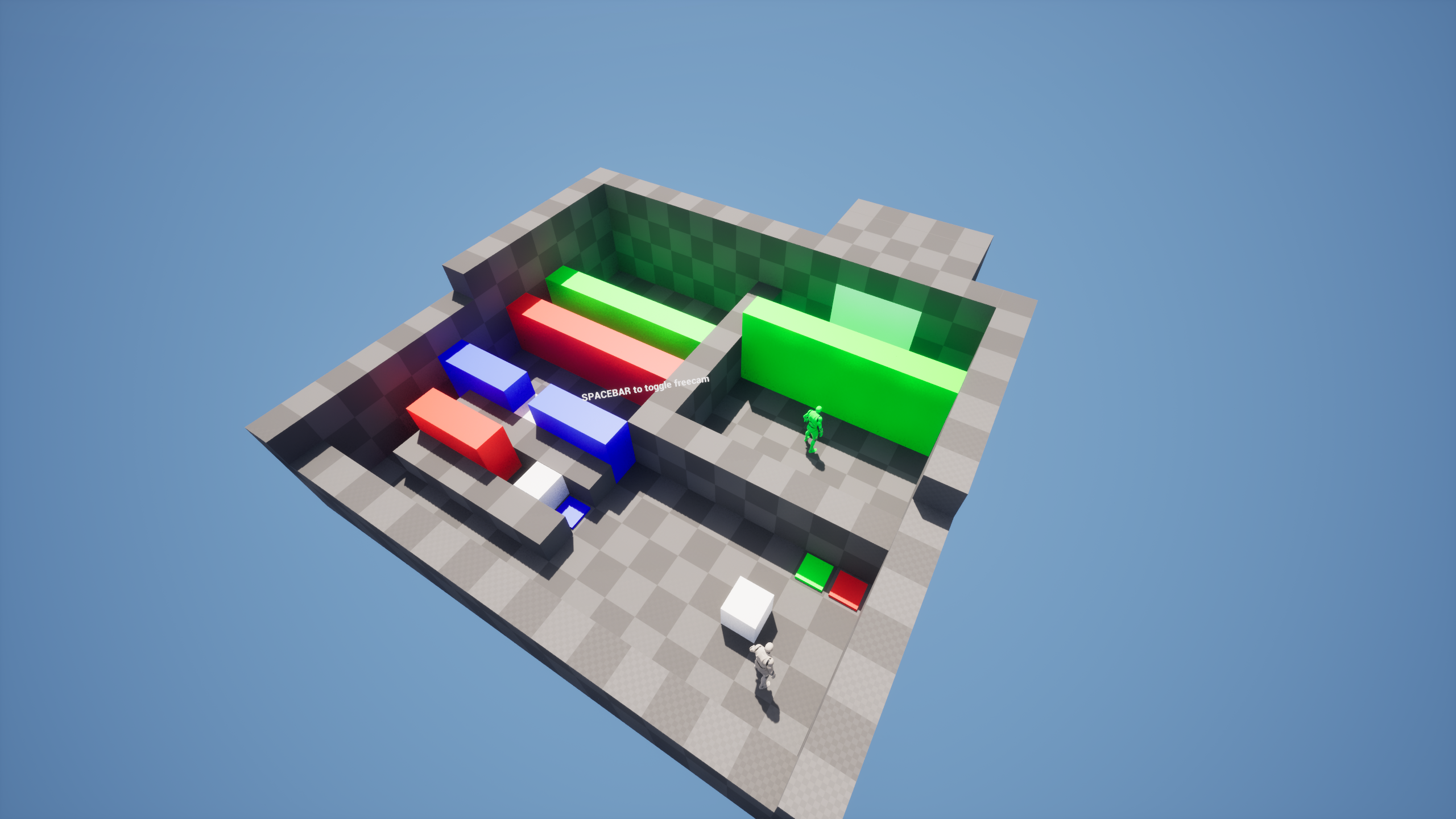Mindguard
About Mindguard

I wanted to try my hands at different genre of games, this time puzzle games. I had no idea what I was getting myself into. While the idea was pretty solid with some fun mechanics I found myself at a big roadblock, puzzle games are hard to make! In the following video you can find a quick demo of the prototype I made. Showcasing some of the mechanics I implemented.
Video Demo (Audio Warning)
My Implementation
For this game, I envisioned a 2D-style puzzle experience translated into a 3D environment, hence the grid-based movement. This naturally introduced a range of challenges, from implementing custom movement systems to handling collisions and gravity on my own.
The core concept centered around the "shield bearer", a character capable of picking up, rotating, and placing shields. This mechanic opened the door to a variety of gameplay possibilities: using shields as movable obstacles, activating buttons, interacting with enemies, and even blocking the "mind."
While holding the shield, it could also be used to block projectiles or enemies directly. The gameplay was split into two distinct phases: controlling the shield bearer and controlling the mind. Although most of the time would be spent with the shield bearer, progress could only be made by switching control to the mind, requiring the player to think ahead.
This led to a segmented gameplay loop where players had to consider not just character movement and environmental interaction, but also how to strategically use the mind and reuse existing gameplay elements in clever ways.
Although I had many ideas for interesting mechanics. I quickly discovered that designing good puzzles and more importantly, engaging ones, was a much more difficult task than anticipated. I spent far more time than expected iterating on puzzle ideas, which ended up eating into the limited development time I had.
As a result, I wasn't able to implement all the core mechanics I had initially planned. The result is a barebones prototype that demonstrates some core idea to be expanded upon.
Despite that, I still had fun experimenting with various systems: pushing cubes, triggering pressure plates, handling player movement within the environment, and dealing with collisions between players, projectiles, and shields while trying to make engaging puzzles.
If you want to have a try at the puzzles you can do so by downloading the game from my GitHub pages linked below.